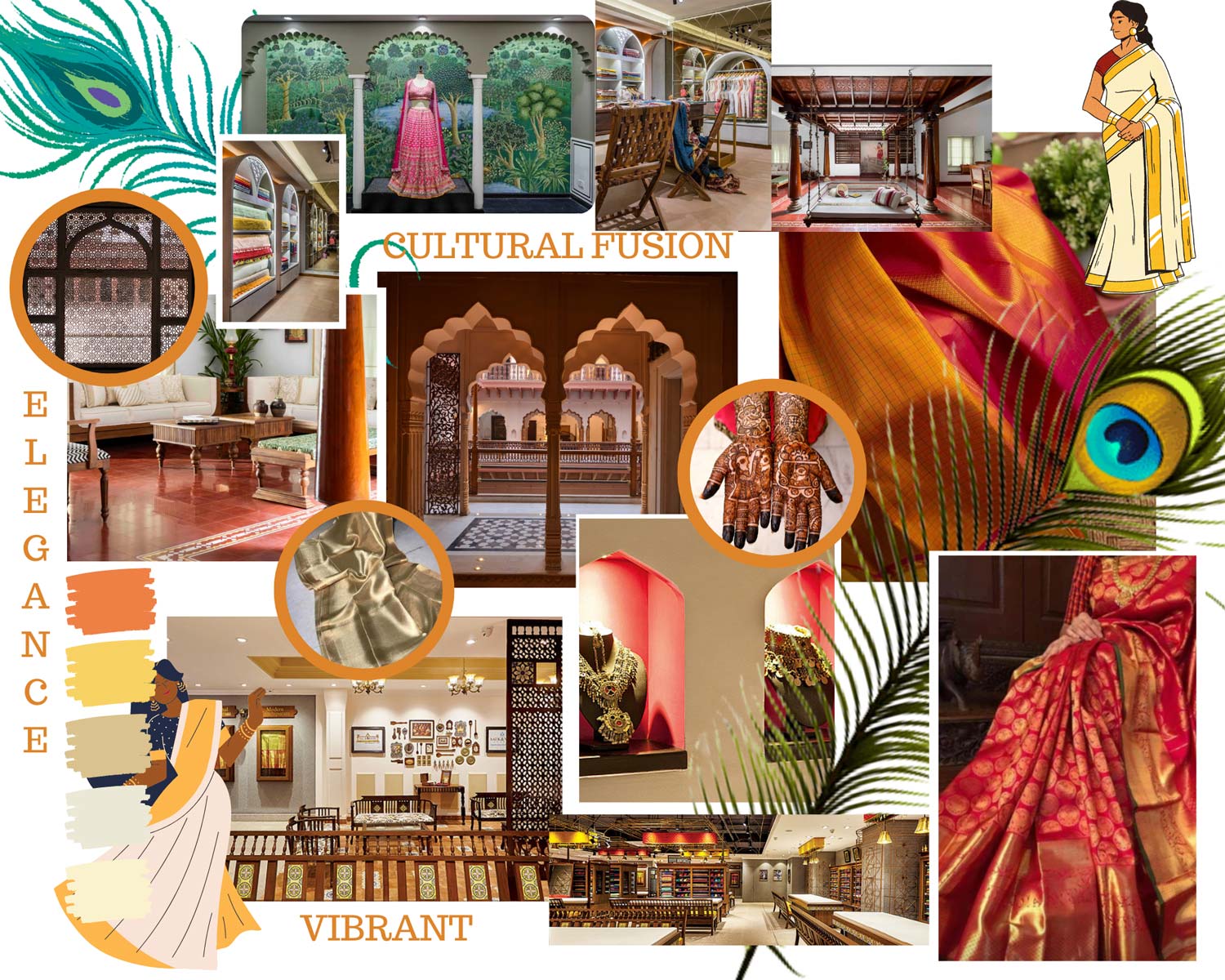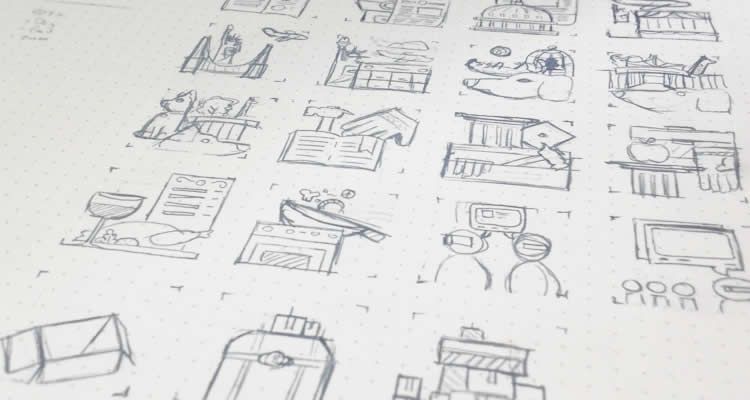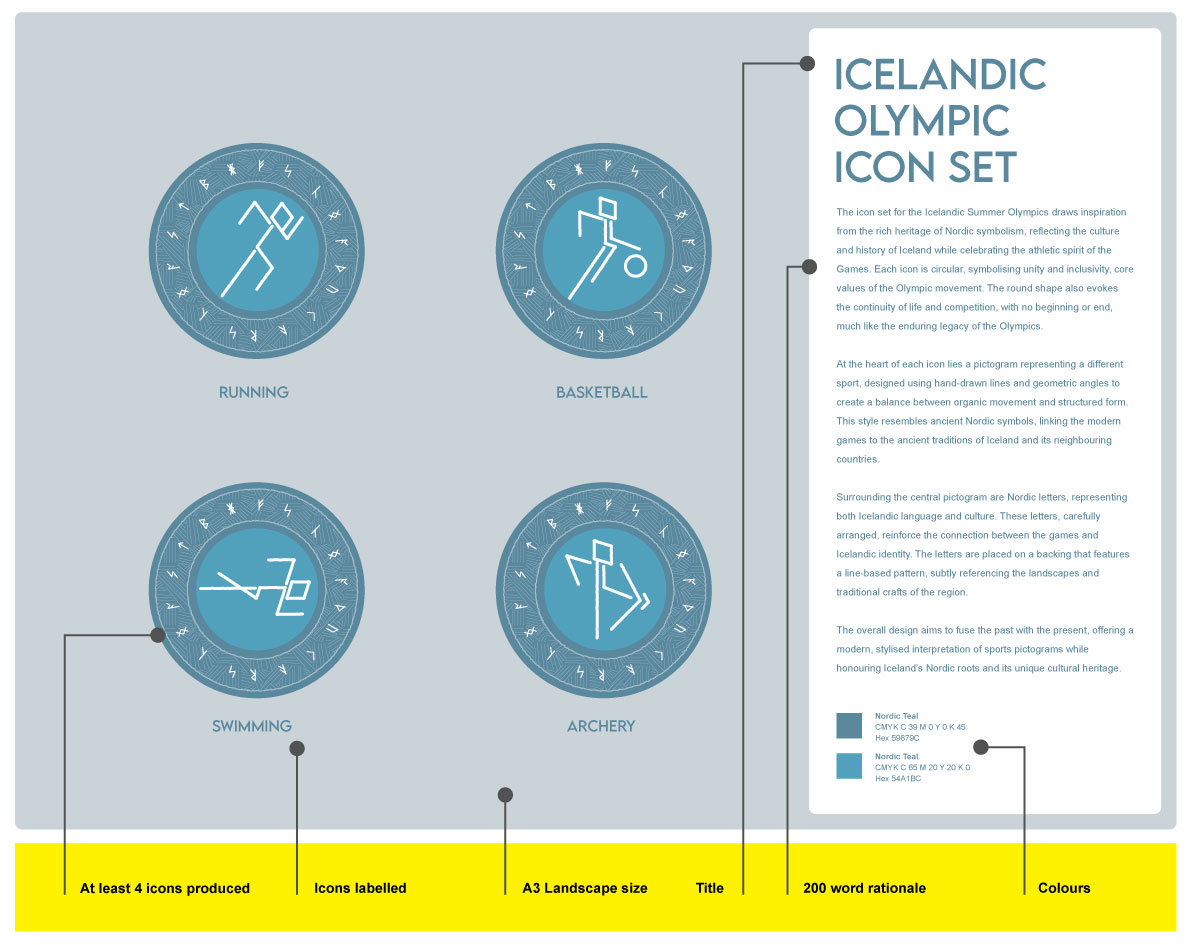
How do designers evolve culturally appropriate design practices?
Unit 2 Outcome 2: Cultural ownership and design
INFO
You are required to create a moodboard that reflects the key aesthetic features and cultural characteristics of a country or culture of which you share a connection. This project aims to help you explore how cultural heritage can inform design and foster deeper emotional connections. Your moodboard will serve as a visual resource for the remainder of this design project, highlighting the unique visual language of the chosen culture. You are expected to carefully research and understand the cultural elements you choose to represent, ensuring your work demonstrates sensitivity and respect for the culture’s traditions and aesthetics.
DETAILS
You are required to produce an A3-sized moodboard using a variety of media. This can include manual drawings, sketches, observational drawings, prints, or collages. You may also use found materials like photos, magazine cut-outs, and textures that visually represent your chosen culture. The composition should be cohesive, clearly organised, and thoughtfully arranged. Your design decisions should reflect the core visual elements of the culture you are representing, with careful attention to colour, texture, and form to ensure the moodboard captures the essence of the culture’s aesthetic.
BACKGROUND
In many professional scenarios, designers must respect and celebrate cultural identity while avoiding superficial or appropriative work. You should research the chosen culture deeply to ensure your design honours its traditions and values. This moodboard will help you learn how to incorporate cultural elements thoughtfully and meaningfully into your designs, ensuring sensitivity and respect in your approach, which is essential when designing for diverse audiences.
ADDITIONAL RESOURCES
INFO
You are required to complete an observational drawing of a relic or culturally significant item that relates to your chosen culture. This task will help you develop your drawing skills, with a focus on observing and capturing the details that make the item unique to its cultural background. You will be working with pencil and must incorporate tone, form, and texture into your drawing to create a realistic and sensitive portrayal of the object. This exercise will also encourage you to appreciate the craftsmanship and symbolic meaning behind cultural items.
DETAILS
You are required to create an observational drawing using pencil on A3 paper. Your drawing should focus on accurately representing the form, texture, and details of the chosen relic or cultural item. Pay close attention to the way light interacts with the object, using a range of tones to build depth and realism. You should also carefully depict the texture of the material, whether it’s smooth, rough, or intricate. Your goal is to capture the essence of the object, using form, tone, and texture to bring it to life on the page.
BACKGROUND
You are required to approach this task with an understanding of how cultural relics and items carry historical, spiritual, or symbolic significance. Many objects have deep-rooted meanings within their cultures, and this drawing exercise will help you explore those connections through close observation. In design, understanding the context and meaning behind an object can enrich the way it is represented or incorporated into creative work. This task will not only help you improve your technical drawing skills but also foster a deeper appreciation for cultural items and their significance in design.
ADDITIONAL RESOURCES
INFO
You are required to create an ideation page for an icon set representing three Olympic sports of your choice. The goal is to develop symbols that clearly communicate the essence of each sport while reflecting the aesthetic characteristics and cultural identity of your chosen culture. This task will help you practice simplifying complex ideas into clear, recognisable icons, all while incorporating design elements that celebrate cultural uniqueness. You are expected to research and understand how visual styles and traditions from your chosen culture can be adapted into modern iconography.
DETAILS
You are required to sketch six different ideas for an icon set, focusing on one or all of the chosen Olympic sports, on an A3 landscape sheet. The drawings must be done manually using pencil or pen, with colour being optional. Your sketches should clearly represent the sport(s) while incorporating cultural aesthetics through design elements like line, shape, and form. Alongside each sketch, provide annotations explaining your design choices, focusing on how the cultural characteristics are represented and how design principles such as balance, contrast, and proportion are applied. This will demonstrate your understanding of cultural influences on design.
BACKGROUND
You are required to understand that cultural influence in design can make iconography more meaningful and engaging. Icons are often used to communicate across language barriers, and by incorporating cultural characteristics, your icons can also reflect the values and traditions of a specific group. When designing for an international event like the Olympics, respecting and celebrating cultural heritage is vital. This task will challenge you to think about how to represent sports through the lens of your chosen culture, showing the influence of cultural elements in shaping design solutions that are both functional and artistically significant.
ADDITIONAL RESOURCES
INFO
You are required to create a vector-based icon set representing three Olympic sports, designed to reflect the aesthetic characteristics of your chosen culture. The icons should be simple, recognisable, and stylistically cohesive, integrating cultural motifs, patterns, or symbolic shapes where appropriate. This task aims to help you develop your skills in simplifying complex ideas into clear, functional icons while incorporating cultural design elements. Your icons should demonstrate a balance between modern visual communication and traditional cultural aesthetics, reflecting the values and visual language of the chosen culture.
DETAILS
You are required to present your vector-based icon set on an A3 landscape page using Adobe Illustrator. The set should include three icons representing different Olympic sports, ensuring that each icon is stylistically consistent and clearly identifiable. The icons must use clean, simple shapes and lines to ensure functionality at various sizes, while incorporating visual elements unique to the culture, such as traditional patterns, colours, or symbolic forms. In addition to the icons, you must include a 200-word rationale explaining your design decisions. This rationale should discuss how the design elements (line, shape, form, and colour) and principles (balance, proportion, and contrast) were applied, and how the cultural characteristics were integrated into the icon designs. The final presentation should be clear, cohesive, and reflective of the culture you’ve chosen.
BACKGROUND
You are required to approach this task with an understanding of how iconography can serve as a visual bridge between cultures, particularly when designing for global events like the Olympics. Icons must communicate across language barriers while celebrating cultural diversity. This project will challenge you to think about how to merge the clean simplicity of modern icon design with the intricate and meaningful elements of a culture’s aesthetic traditions. By combining cultural motifs with functional design, your icons will serve as a testament to the power of design to honour heritage while remaining universally accessible.
ADDITIONAL RESOURCES
INFO
Students will be required to undertake a written SAC, which requires a grasp of the Australian Indiegnous Design Charter (https://indigenousdesigncharter.com.au/australian-indigenous-design-charter/) The SAC will require an understanding of the ethical and legal responsibilities impacting the work of the designer, such as issues of ownership and intellectual property, as well as protocols for the creation and commercial use of Indigenous knowledge in design, including representations of Aboriginal and Torres Strait Islander culture
DETAILS
The SAC will include a combination of written response and multiple choice questions relating to how designers can use Aboriginal and Torres Strait Islander knowledge and design within their design practice in an ethical and respectful manner.
BACKGROUND
In this area of study, students explore the designer’s ethical and legal responsibilities when drawing on knowledge and designs belonging to Indigenous communities from Australia or abroad. They learn how to adopt culturally appropriate design practices, including protocols for the creation and commercial use of Indigenous knowledge such as those published in the Australian Indigenous Design Charter. In particular, students develop a deep appreciation for the histories, practices and foundational contributions of Aboriginal and Torres Strait Islander peoples to Australian design identity, while learning about respectful and appropriate representations of Aboriginal and Torres Strait Islander culture in design.
ADDITIONAL RESOURCES


